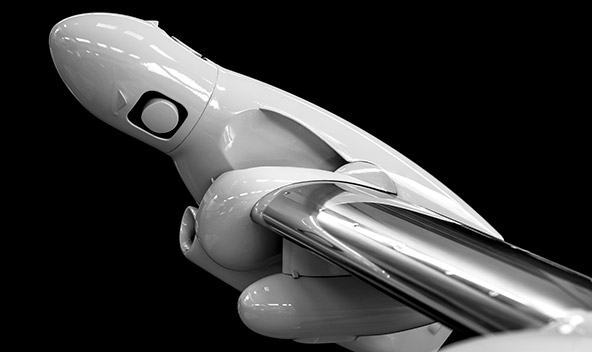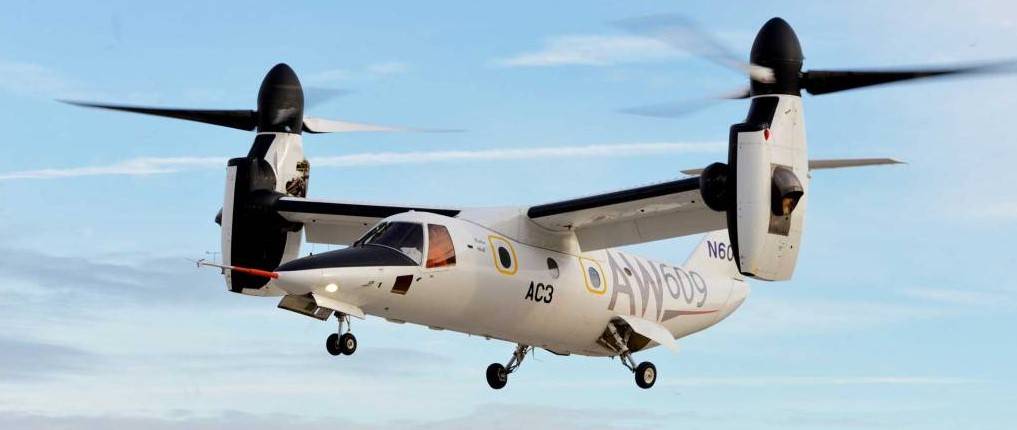CRP Technology, an Italian additive manufacturing materials company, has 3D printed multiple parts for a wind tunnel model of the tiltrotor AW609 aircraft. Using SLS and CRP Technology’s Windform carbon-composite materials allowed the model to be completed and tested within four days. The full 1:8.5 scale model prototype of the AW609 was made by Leonardo, an Italian manufacturer for the aerospace, defense and security industries.
Under the supervision of the Leonardo Helicopter Division (Leonardo HD), the AW609wind tunnel model was designed, manufactured and assembled with a 3D printed nose and cockpit.
These, and other external components of the aircraft, were made with Windform carbon fibre reinforced composites. This material features high heat deflection and stiffness, thus, it is capable of withstanding the aerodynamic loads simulated during wind tunnel testing.

Testing aerodynamics in the wind tunnel
Wind tunnels are used to test models of proposed aircraft and engine components. The model is placed in a tunnel and air is blown past it. The forces on the model are then tested with various measuring instruments.
The AW609 was tested at at Leonardo HD wind tunnel facility in Milan, using low wind speeds to assimilate a standard range of flight attitudes. According to CRP Technology, the tiltrotor AW609 model showed “excellent results”, with high-performing mechanical and aerodynamic properties.
In addition to aerospace, wind tunnel testing is also used in the automotive industry. Last year, Volkswagen tested its prototype electric race car, constructed with about 2,000 3D printed parts. The aim of the test is to help auto and aircraft manufacturers build vehicles with better aerodynamics and reduced weight.
Some additive manufacturing companies also create parts specifically for wind tunnel tests, such as Royal DSM, a Dutch multinational health and materials company. Royal DSM recently launched two new materials for 3D printed automotive parts, specifically adapted to wind tunnel testing.
Combining the advantages of helicopters and planes
Tiltrotors such as the the AW609 are combinations of helicopter and airplane. Fixed-wing aircrafts, i.e, planes, are more fuel-efficient and fly at higher speeds. In contrast, rotary-wing aircrafts (helicopters) can hover and take-off / land vertically. According to Leonardo, the AW609 aircraft can also move at twice the speed and range typical of helicopters.
As a multi-role aircraft, the AW609 can be used for private transport, emergency medical services, search and rescue, defence and national security. Another multi-role aircraft released in the last year is the Ka-62, produced by Russian Helicopters.
In other recent aviation news, Boeing has tested an experimental prototype of its electric autonomous passenger air vehicle (PAV) or so-called “Flying Car”. In tests last week, the prototype completed a controlled takeoff and hovered for a few seconds before landing. A year ago, the vehicle was just a concept design.
It remains to been seen how far into the future the Boeing PAV will be ready for commercial flights. It has taken the AW609 several years.
Source: 3dprintingindustry


